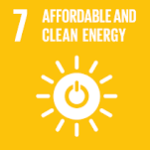Crescent Sustainability Initiatives
Partnerships for the Goals (SDG 17)
B.S. Abdur Rahman Crescent Institute of Science and Technology (BSACIST) demonstrates a strong commitment to Sustainable Development Goal 17, which emphasizes the importance of enhancing the capacity for effective public-private partnerships in the field of sustainable development. The institute has established comprehensive policies for energy-efficient renovations and divestment from carbon-intensive energy industries, aligning its practices with global sustainability efforts. By adhering to recognized energy efficiency standards such as EDGE, IGBC, and LEED, BSACIST ensures that all new constructions and renovations contribute to reducing the carbon footprint and promoting sustainable energy practices.
The implementation of these policies is evidenced by various initiatives, including the installation of rooftop solar photovoltaic power plants and solar water heating systems, which significantly reduce reliance on conventional energy sources. Furthermore, the institute actively engages with financial institutions to promote sustainable investment practices, ensuring transparency in its divestment from fossil fuels. Regular energy audits have identified substantial opportunities for energy savings, reinforcing the effectiveness of BSACIST’s strategies. Public accessibility to policy documents and ongoing community outreach programs further enhance stakeholder engagement, fostering a culture of sustainability and innovation within the educational sector.
Through continuous policy reviews and updates, BSACIST remains proactive in adapting to new challenges and advancements in energy efficiency technologies. This commitment not only positions the institute as a leader in sustainable practices within higher education but also contributes significantly to global efforts in combating climate change. By fostering partnerships and promoting sustainable practices, BSACIST sets a precedent for other institutions, demonstrating the vital role of collaboration in achieving the objectives of SDG 17.
A. Comprehensive Energy Efficiency Measures
To enhance energy efficiency and reduce overall energy consumption by approximately 10.5%, comprehensive simulation studies were conducted to model the buildings’ energy-consuming systems. These studies provided a thorough understanding of where energy savings could be realized, leading to the implementation of various energy measures.
- AAC/Aerocon Blocks and Energy-Efficient Roof Configurations:
The use of walls constructed from AAC (Autoclaved Aerated Concrete) or Aerocon blocks, along with energy-efficient roofing materials, helps to minimize heat ingress, which is crucial for maintaining comfortable indoor temperatures and reducing cooling demands.
- Efficient Chiller Machines:
Upgrading to more efficient chiller machines is essential for optimizing cooling performance while consuming less energy. These machines provide better thermal comfort with less energy expenditure.
- Variable Frequency Drives:
Incorporating variable frequency drives in pumps, cooling towers, and air handling units (AHUs) allows for the regulation of energy consumption based on real-time occupancy. This ensures that energy is used effectively, as the system adapts to the actual demand rather than operating at a constant high capacity.
- Heat Recovery Wheels:The installation of heat recovery wheels contributes to energy efficiency by recovering waste heat and reusing it, thereby reducing the overall energy required for heating and cooling.
- High-Performance Glass:Selecting high-performance glass that allows minimal heat transfer is another significant measure. This not only reduces the cooling load during hot months but also enhances the building’s thermal insulation properties.
- Efficient Lighting Design:The lighting design incorporates energy-efficient solutions, such as compact fluorescent lamps (CFLs) and T5 bulbs, which provide higher brightness with lower energy consumption.
- Low Power Consumption Fans:The use of fans designed to consume less power contributes to overall energy savings while ensuring adequate ventilation and comfort.
- Optimized Lighting Design:The lighting layout has been carefully planned to maximize visual comfort while minimizing overall lighting power density, ensuring an efficient use of energy.
- External Fins and Shading:Implementing external fins and shading devices reduces direct sunlight penetration, further lowering cooling demands and enhancing thermal comfort within the buildings.
By adopting these measures, BSACIST not only enhances energy efficiency but also sets a strong foundation for sustainable building practices that can be modelled by other institutions aiming for similar goals.
B. Holistic Sustainability: Transforming Campus Energy Ecosystem
By integrating multiple approaches – solar power generation, energy-efficient technologies, smart infrastructure design, and collaborative student-driven projects – B.S. Abdur Rahman Crescent Institute of Science and Technology, has created a holistic framework for upgrading buildings to higher energy efficiency. The institute’s commitment goes beyond mere technological implementation, fostering a culture of sustainability and innovation. These strategic upgrades not only reduce operational costs and carbon footprint but also serve as a model for sustainable institutional development, demonstrating how existing infrastructure can be transformed into energy-efficient, environmentally responsible spaces.
Strategic Solar Infrastructure: BSACIST’s Comprehensive Energy Efficiency Approach
B.S. Abdur Rahman Crescent Institute of Science and Technology (BSACIST) has implemented a comprehensive strategy to upgrade existing buildings to higher energy efficiency through innovative renewable energy solutions. As part of its ‘Green Campus’ initiative, the institute has installed multiple rooftop solar photovoltaic power plants with a total capacity of 650 kWp, strategically positioned across various campus buildings. These solar installations include a 550 kWp grid-tied plant on academic buildings and a recently added 100 kWp plant in the New Architecture Block and CIIC Block, demonstrating a systematic approach to energy infrastructure upgrades.
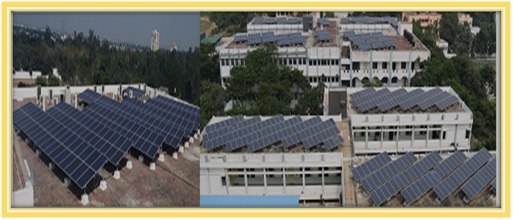
Figure XVII (3.7) – 1 : Solar Panel Installed At Roof Top In Various Buildings
Quantifying Success: Solar Power Generation and Financial Savings
The solar power implementation has yielded significant energy efficiency improvements.
Total Solar Power Generation – 650kWp up to from 2014 to 2023
| Plant | Units | Amount Saved |
| 150Kwp | 16,14,426 | 1,47,77,494 |
| 100kWp | 12,24,046 | 1,13,85,248 |
| 300kWp | 17,59,980 | 1,72,16,042 |
| New 100kWp | 3,31,420 | 33,33,444 |
| Total | 49,29,872 | 4,67,12,228 |
These solar installations now constitute 18% of the total electricity consumption since June 2014, representing a substantial upgrade in the campus’s energy efficiency infrastructure.
Innovative Energy Solutions: Beyond Solar Power Generation
Beyond solar power, BSACIST has implemented complementary energy-efficient technologies to upgrade existing buildings. A notable example is the installation of solar water heating systems with a total capacity of 39,500 litres, equivalent to 365 electric geysers of 2kW capacity. These systems are strategically placed in Men’s Hostel blocks, Ladies Hostel, and New Staff Quarters, estimated to save approximately 24 lakhs in power consumption annually. The institute has also introduced innovative solutions like zero-export devices to manage surplus solar power generation and prevent potential damage to diesel generator sets.
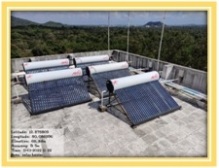
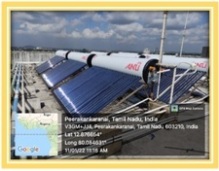
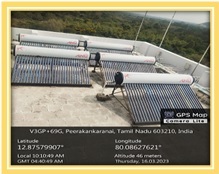
Figure XVII (3.7) – 2 : Geotag photos documenting the installation of Solar Panel in KBA Men’s Hostel, Ladies Hostel and Staff Quarters.
| Block | No. of tanks | Capacity in litres |
Men’s Hostel | ||
| A Block | 20 | 5000 |
| B Block | 6 | 3000 |
| C Block | 6 | 3000 |
| D Block | 8 | 4000 |
| Main block | 20 | 5000 |
| PG block | 12 | 3000 |
Ladies Hostel | ||
| Main block | 10 | 5000 |
| Annexure Block | ||
| New Block Phase 1 | 17 | 5750 |
Staff Quarters | ||
| New Staff Quarters | 23 | 5750 |
| Total Capacity | 122 | 39,500Litres |
Smart Infrastructure: Collaborative Energy Management Strategies
To further enhance energy efficiency, the institute has developed additional infrastructure improvements. Solar street lighting projects have been implemented along the road connecting staff quarters to the men’s hostel and the architecture block – a collaborative effort between third-year electrical engineering students and the estate electrical department. The zero-export device ensures that excess power generated by the solar power plant does not damage the diesel generator sets, while allowing the solar power to be shared across the campus grid during load shedding.
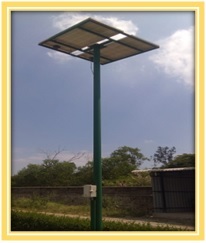
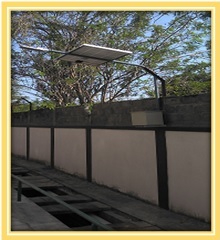
Figure XVII (3.7) – 3 : Solar Lights at Sports Village @ BSACIST
C. National Conference on Functional Materials for Sustainable Energy & Information Technology (FuMSEIT – 2023)
The School of Physical and Chemical Sciences at B.S. Abdur Rahman Crescent Institute of Science and Technology (BSACIST) organized a National Conference on Functional Materials for Sustainable Energy and Information Technology (FuMSEIT – 2023). This prestigious event, focussed on the critical role of smart materials in advancing green energy solutions and promoting environmental sustainability.
The conference bring together the researchers, industry experts, and academicians to share insights and innovations in the field of functional materials. Participants have the opportunity to engage in discussions on the latest developments in smart materials, their applications in sustainable energy systems, and their potential to address pressing environmental challenges. By fostering collaboration and knowledge exchange, FuMSEIT – 2023 seeks to inspire new ideas and strategies that contribute to a sustainable future.
As part of BSACIST’s commitment to sustainability and innovation, this conference serves as a platform for showcasing cutting-edge research and technological advancements. The series of keynote speeches, panel discussions, and networking opportunities facilitated meaningful connections and collaborations in the realm of sustainable energy and information technology. BSACIST enable the delegates for this important dialogue to explore the transformative potential of functional materials in creating a greener and more sustainable world.
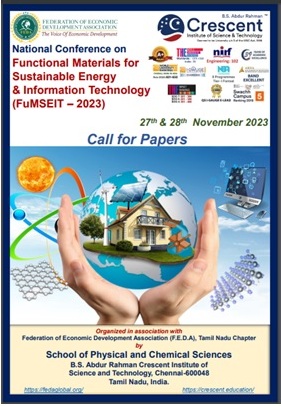
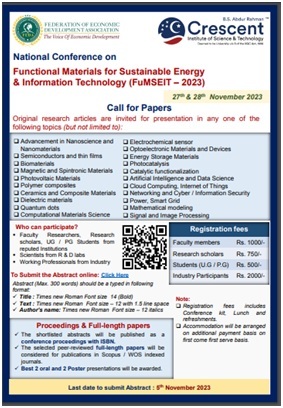
Figure XVII (3.7) – 4 : National Conference Brochure
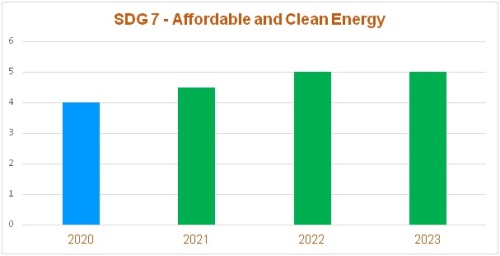
Rubrics for the SDG 7: Affordable and Clean Energy
| 4 to 5 | There is significant progress in effective implementation compared to the previous year |
| 3 to 4 | The necessary processes/activities (Energy-efficient renovation and building, Energy use density, Renewable energy, Outreach activities) have been implemented |
| 2 to 3 | There is an explicit plan to address the ‘Affordable and Clean Energy’ and necessitated processes have been initiated |
| 1 to 2 | There is an understanding and willingness to contribute effectively for achieving the UN targets of SDG 7 |
| 0 to 1 | There is no/partial willingness and plan to contribute for achieving the UN targets of SDG 7 Affordable and Clean Energy |
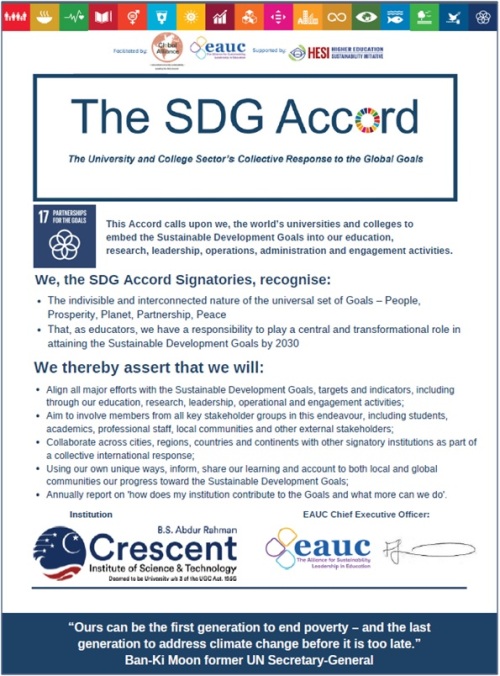
Please find the Report: SDG ACCORD REPORT


